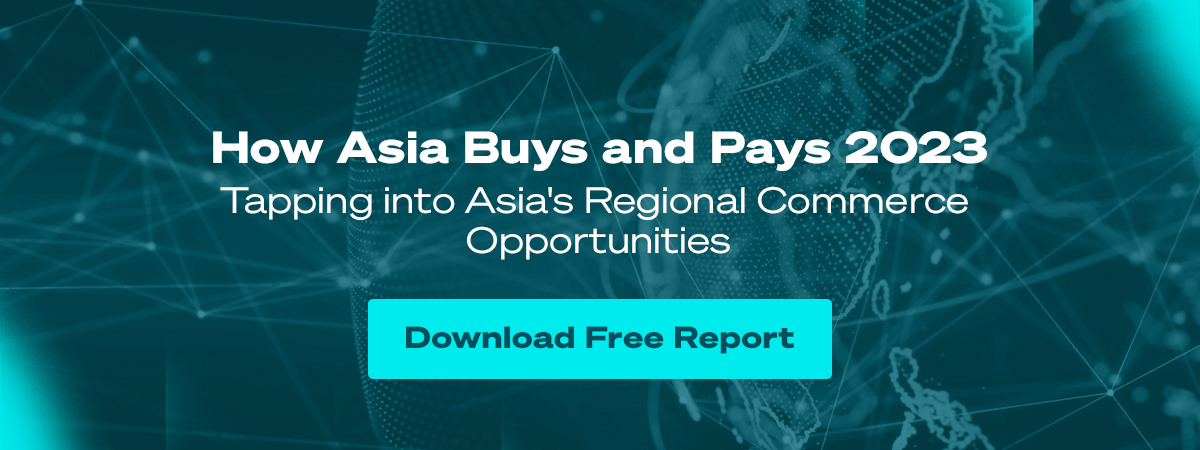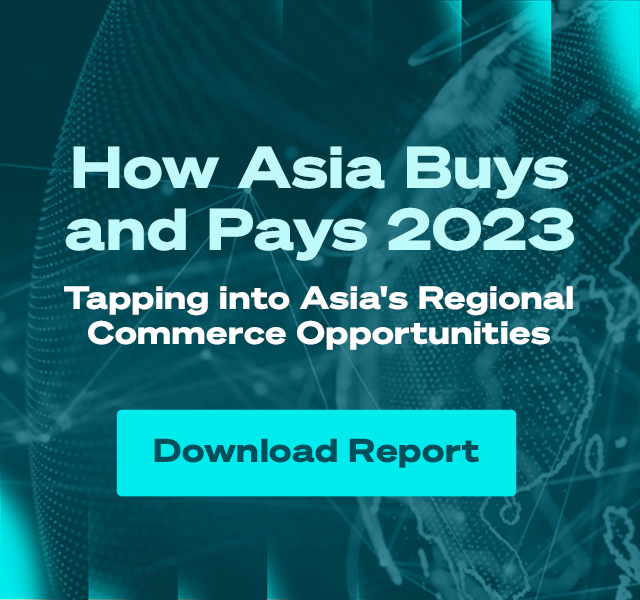
Payments Powerhouses: Transforming Payments in the Philippines
Payments Powerhouses is a monthly series featuring trailblazers on Southeast Asia’s fintech scene. In the second instalment of the series, we speak with Georg Steiger, an Austrian entrepreneur who spent years advising and building businesses across the region before moving to the Philippines and co-founding First Digital Finance Corp., the innovative fintech behind the popular credit apps BillEase, Loan Ranger and Balikbayad.
In particular, BillEase has become popular amongst Filipino consumers for its flexible payment options and rides the accelerating wave of the Buy Now, Pay Later movement.
Georg earned a law degree from the University of Vienna and an MBA from Indiana University. He rose to Associate Principal at McKinsey and served in advisory and leadership roles at Kim An Group prior to starting First Digital.
Georg spoke with us from his home in Manila.
Hi Georg! You’ve worked all over Southeast Asia. Why did you decide to focus on the Philippines?
Georg Steiger: I am originally from Austria. I moved to the U.S. to study and subsequently worked in McKinsey in Switzerland. I’ve always been interested in growing economies so I moved over to Singapore and consulted for retail banks across the region for 7 years. After McKinsey I moved to Manila, where I had the opportunity to help one of the local banks build up their retail business and really got to understand the market here.
The banks here were very risk-averse at that time. Payments were rudimentary and mostly based on cheques. This was a system that the Philippines inherited from the US but the problem with cheques is once a country is hooked on them, it’s not easy to move on. I observed that a lot of large payments, like the bank-to-bank payments, were still made using cheques. BSP, the central bank, pushed banks to join the recently established National Retail Payment System which facilitates interbank payments. That is a good step forward but it will take time to shift behavior.
We also saw these banks having trouble getting their underwriting costs under control. Their cost to underwrite a small loan of $500 is almost the same as underwriting $50,000 and narrows the segment banks can profitably serve.
As a result, I saw an opportunity to serve the growing Filipino middle class.
How were Filipinos managing payments if not through the banks?
Georg Steiger: First, credit cards are not a popular option in the country. Only about 3% of the population is carded and that’s the upper-income segment.
Many people in the Philippines rely on pawnshops. People working in Manila use them to send money to their families in the provinces, to pay bills, and you can even use them for insurance. They basically offer a full-fledged range of services. And these pawn shops have a much more extensive reach than the banks, penetrating deep into the country while the banks are mostly in the cities.
Tell us how you got started.
Georg Steiger: We began with two products. Balikbayad provides credit for Filipinos working abroad, while Loan Ranger was one of the first cash lending businesses in the country. Then we aimed for a product with more impact and introduced BillEase. Initially, we worked with Lazada. They wanted to sell more big-ticket items but the requirement for 90% cash on delivery was scaring off consumers who wanted to pay by installments.
BillEase allows them to ‘buy now and pay later.’ This is a big deal for consumers here. You can buy the item now then pay for it on the next payday. You don't have to pre-fund the app. We then opened up our platform to all merchants in the country and now have more than 100 already onboarded!
How do you determine the creditworthiness of new applicants?
Georg Steiger: It's different from what you see in more developed markets like Singapore, where they can rely on existing infrastructure to determine someone’s credit. About 80% of our customers are unscored and we have to make our own credit decisions.
But at the same time, we have to make those decisions quickly because consumers want to buy now, and not wait for you to get back to them in three days. This is where a lot of our effort goes. We observe customer behaviour, collect a lot of data, and then run the information through an automated system.
Because there is little traditional credit information available, it’s important to incorporate as many other data sources as possible to get a full picture of the client.
This starts with establishing the identity of the client. For this we ask for basic demographic information - name, birthdate, address. We also ask them to upload an ID which we read automatically. Then we ask for rudimentary information on income - sources of income, how often they get paid, do they run a business, etcetera. We also incorporate non-structured data such as behavioural and metadata which we get from internal and external sources.
It’s absolutely essential to be efficient in the checkout flow, because it means that the merchant can get the payment approved immediately. We have to be very fast if we are involved in the checkout flow - we can’t afford a few days’ waiting time - the merchant would most likely lose the sale.
What is the approval rate for these quick credit decisions?
Georg Steiger: More than 90% of payments are approved immediately. So it's very different from a traditional process, where someone applies for credit but two days later an institution is still asking them to provide more information.
Can you describe your typical consumer?
Georg Steiger: I would say they are people between the age of 25 and 35. This is basically the millennial and Generation Z audience. We see a lot of call-centre agents, freelancers, and even bank staff. They have some income but not really enough to get credit cards.
Once they begin using our app, they are starting to create a credit score. This means we’re providing a springboard for them to enter the banking system and build a reputation. We actually hear back from quite a few customers who say, ‘Oh, because of my relationship with you, I was able to get a car loan or home loan from the bank.’
How do the instalment plans on BillEase work?
Georg Steiger: We give up to 40,000 pesos in credit limits. That’s about 800 USD. Consumers can also mix their payment options. If the limit is not enough, they can make a downpayment as well.
BillEase charges a little bit of interest, but it’s much lower than other lending-focused apps in the market. We charge around 3.5%, whereas more cash lending focus apps charge north of 10%. At some point, it just doesn't make sense to buy an instalment anymore if the interest is too high.
In addition, we are rolling out more and more 0% APR offers where the merchant covers the interest at a discounted rate and the customer just pays the exact amount.
Can you tell us about some of the merchants or use cases on BillEase?
Georg Steiger: We have a broad mix, and BillEase has close to 100 merchants live. The more popular categories amongst consumers are electronic gadgets - no surprise there as it’s a decent purchase size for instalments. We have merchants in the home improvement, health, beauty and medicinal industry. Recently we’ve onboarded a skincare company and that’s become quite popular as well.
I’d like to onboard more merchants in the education sector as well.
A recent study said Filipinos spend over 4 hours a day on social media, more than any country in the world. What is your take on the Philippines’ adoption of technology?
Georg Steiger: Mobile phones are everywhere now and pretty much everybody is online. But Internet speed isn’t very good and kind of pricey. And while the Philippines is embracing digital alternatives, we had to invest quite a bit in market education for people to become familiar with our services.
When you're one of the first movers, this is always the biggest challenge - getting the market to understand your products and use them.
What is your view on digital wallets in the country?
Georg Steiger: Wallet adoption has really jumped during the crisis as many people did not want to touch cash and started buying much more online. There is a lot of competition and all the major players are affiliated with one of the big tech platforms. GCash which has investment from Alibaba is leading the pack, and is targeting USD 40bn transaction volume for 2021. Thats more than 10% of GDP. They do have a competitor called PayMaya, which received funding from Tencent and coins.ph which has investment from GoJek.
I also expect GrabPay to play a role at some point. They were just really getting started but then the pandemic broke out.
With big international players like Tencent and GrabPay taking notice of the Philippines, how do you plan to remain a market leader?
Georg Steiger: We are really focused on product. Our resources go into developing the platform and this allows us to roll out a lot of improvements. We deploy new features on the back end almost daily. So we’re really about being close to the market and shipping products fast.
I think as the market develops there will be more opportunities for everyone. Especially as lending tends to be a much less concentrated space than wallets. Also as an independent player, it is easier for us to talk to many merchants.
Do you see growth tapering off at some point?
Georg Steiger: Not in the near future. I think the Philippines e-commerce ecosystem has just hit the inflection point where growth is really steep. Basically where Indonesia was a few years ago. For the coming years Google/Temasek forecast Philippines to top Indonesia in terms of digital growth. Our own growth is accelerating - in Q1, we onboarded as many customers as we did for the whole of last year. There's a lot of room for us to grow in the Philippines. The market is still in its infancy.
You have a lot of experience elsewhere in Southeast Asia. Have you looked at expanding to other countries?
Georg Steiger: One of our co-founders is from Vietnam so we might look at that. Maybe we’ll consider one or two other markets but we don't see ourselves going into 20 markets. The financial services landscape in Southeast Asia is very diverse. Every market has its own rules. The products are different, the customer expectations are different, and the regulations are different. You can’t just take something that works here and make it work in Indonesia, Vietnam or Thailand. You probably need to redo at least half of it.
You are trying to accommodate different systems inside the Philippines too. How do you align different users and platforms?
Georg Steiger: This is one of the reasons we partnered with the payments provider 2C2P. Anyone who is already using 2C2P can easily integrate with BillEase. They don't have to update the website or change any code.
They just flip the switch and they're live.
Lastly, any advice to entrepreneurs in the Philippines?
Georg Steiger: Whatever you’re doing, make sure you’re passionate about it and enjoy doing it - because it will take up most of your energy. Second, progress doesn’t happen as fast as you’d like it - so prep your cash runway and it pays to be patient as well.
. . .
Payments Powerhouses is a monthly editorial series interviewing the movers and shakers of the payments and wider fintech industry, in Southeast Asia and beyond. If you’d like to be featured on Payments Powerhouses, reach out to us here.

